Photographing Baltic amber inclusions
I began collecting amber inclusions 2013
The summer of 2013 we were in Denmark, there I visited several amber-shops. I must have looked through several hundred examples of polished amber with insects. Using an 8x loupe, I choose to buy the few that I thought would be good for close-up photographs. Al the samples I looked at was well polished and looked nice, but for photographing I was especially interested to find insects that looked good, was close to the surface and embedded in light and clear amber. The reason why I was looking to find insects that was close to the surface was that it is difficult to take microscope photos trough glass – the picture detoriates with the thickness of the glass. For high NA lenses correct coverslip thickness is very important. Low NA lenses are not so sensitive but not unaffected. Amber is said to have a refractive index of 1.54, if this is correct it is even more than glass used for microscope coverslips. Below are two examples from my “Denmark collection”.
Submerged in glycerol and microscope oil
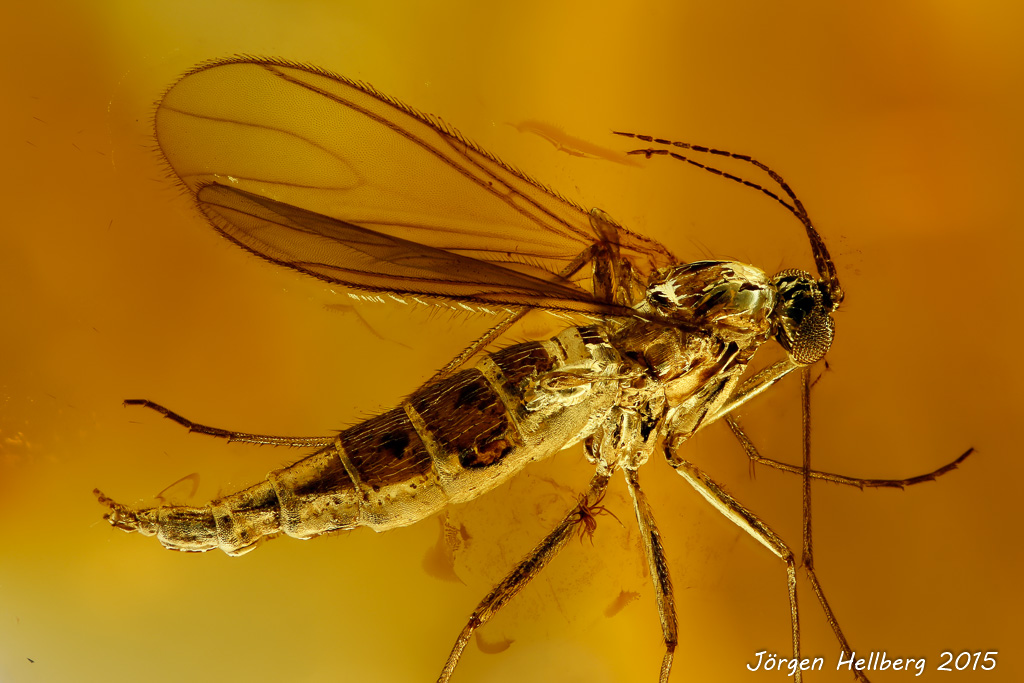

The fly is cropped, both pictures are jpegs stacked with Zerene Stacker. I have used Adobe Photo Shop for some dust removal, smart sharpening etc. I submerged the amber in glycerol and used the Nikon 160/- 4 /0,13 W. The light was continuous led light. I have a 2.5x projection lens before the camera so this is approximately 10x on a 24x36mm camera sensor.
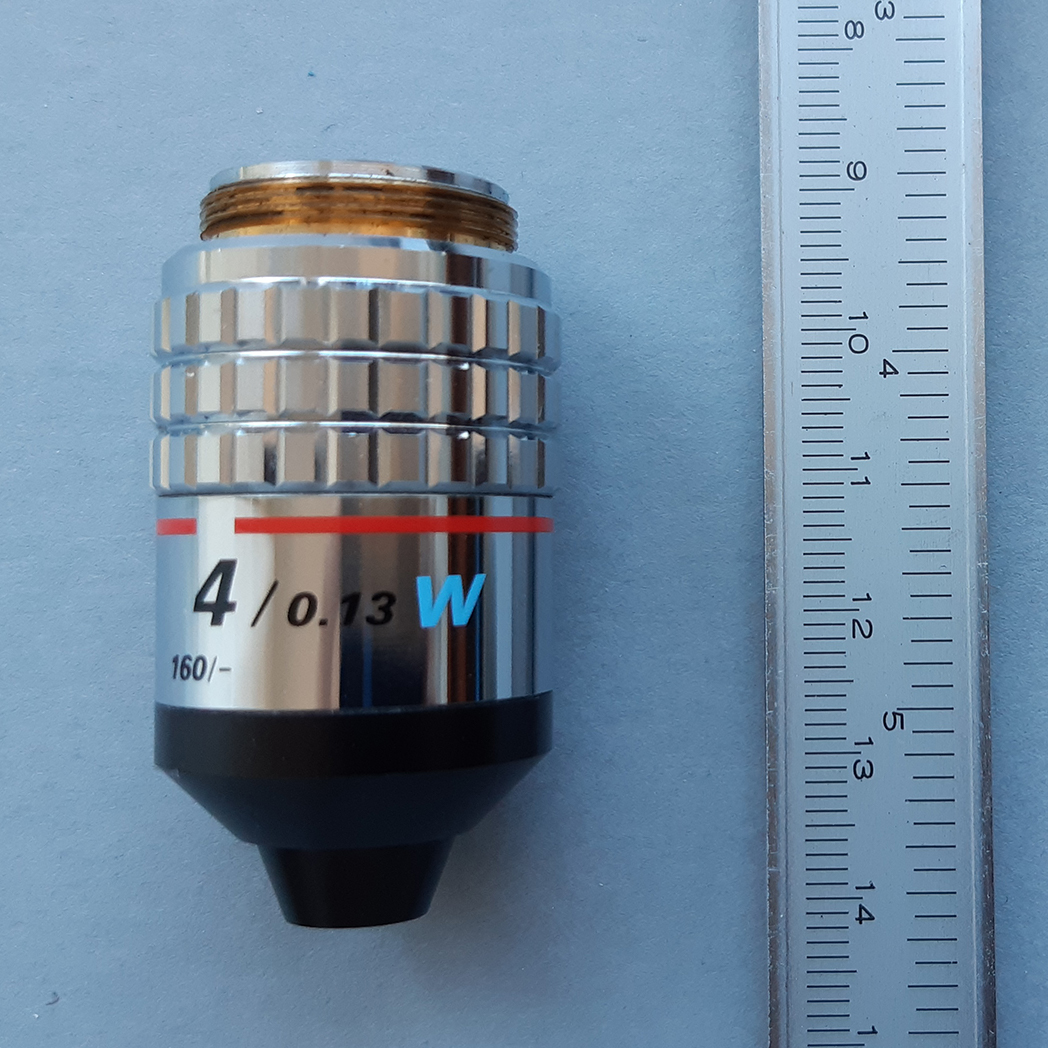
Nikon 160/- 4 /0,13 W 160/-.
This is a special objective that is used for subjects in water. The black cap dips into the water. The lens used to be quite easy to find on ebay, but during the resent years it have become more and more diffucult to find one for sale.
My main reasons for using a dipping lens was that I wanted to avoid effects of the non-flat amber surface, reflections and minor surface scratches. It took some trial and error to get the above result, still the quality is far from what I get in air with “normal” subjects. I tried with water first. Water works for very shallow parts of the insects, but I could not get “deep” into the amber. Glycerine with a refractive index close to 1.47 took me a little deeper into the amber. Immersion oil with refractive index 1.51 is probably even a little better but as it is both cheaper and easier to handle glycerine I prefer to start with glycerine. Below are three pictures that shows the difference between; water, glycerol and microscope oil.


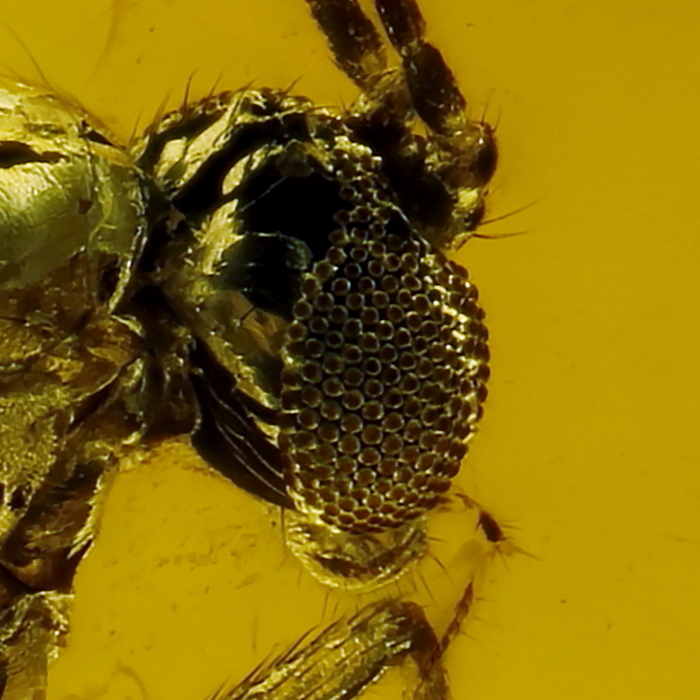
This is a final picture of the fly, submerged in the microscope oil. I white balanced (WB) the picture to remove the colour of amber.

Ant in Baltic amber
One of my amber inclusions is an ant that I bought on eBay. It is well polished and flat, so it is quite easy to photograph. Even when the polishing is well done there tend to be some surface imperfections that can be handled by submerging the amber in glycerol or microscope oil. In this case I could not do this without risking damaging the ant – one of the legs has penetrated the surface.


For the first picture I used a Mitutoyo M plan apo 5x objective. For the second picture I used a Mitutoyo M plan apo 20x.
Compensating variation and a pollen grain in Baltic amber
In November 2013 I first heard of compensating variation on photomacrography.net. I have made a blog post about the method December 2019. Compensating variation is not a perfect method there is some detoriation of the picture, but the advantage is that you can use a microscope objective with higher NA to take a photo of an amber inclusion. Below is the picture of the day from 13 November 2019 where I have used the method of compensation variation to photograph a pollen grain on the wing of an ant.
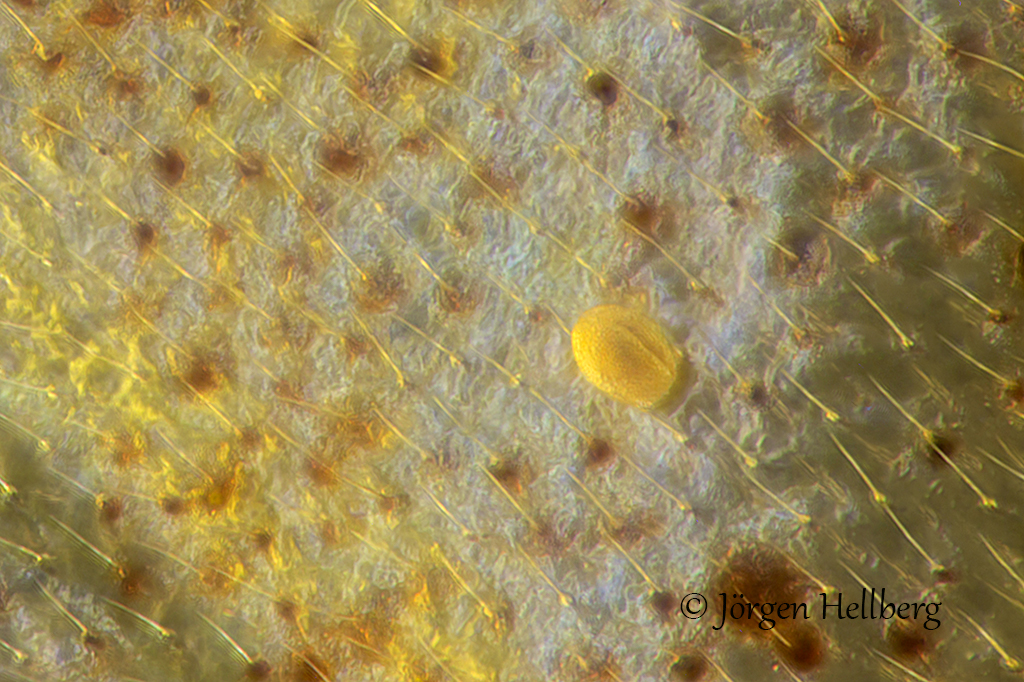
I used a Nikon M plan 40x 0,5 ELWD objective on a Nikon Optiphot microscope. Trying to compensate for the fact that this lens is made for subjects without a cover glass and this subject was embedded in amber I used a shorter than usual tube length 160mm instead of 210mm. Post processing in Adobe Lightroom. WB is always a little bit tricky in amber, here I used the wing of the insect as “grey”. After the picture was stacked in Helicon Focus, I sharpened it in Adobe photoshop using Smart sharpen and unsharp mask.
A photogrammetry model
I wanted to make a photogrammetry model of the amber ant. For this I photographet the ant, using 21 camera positions like the one below.
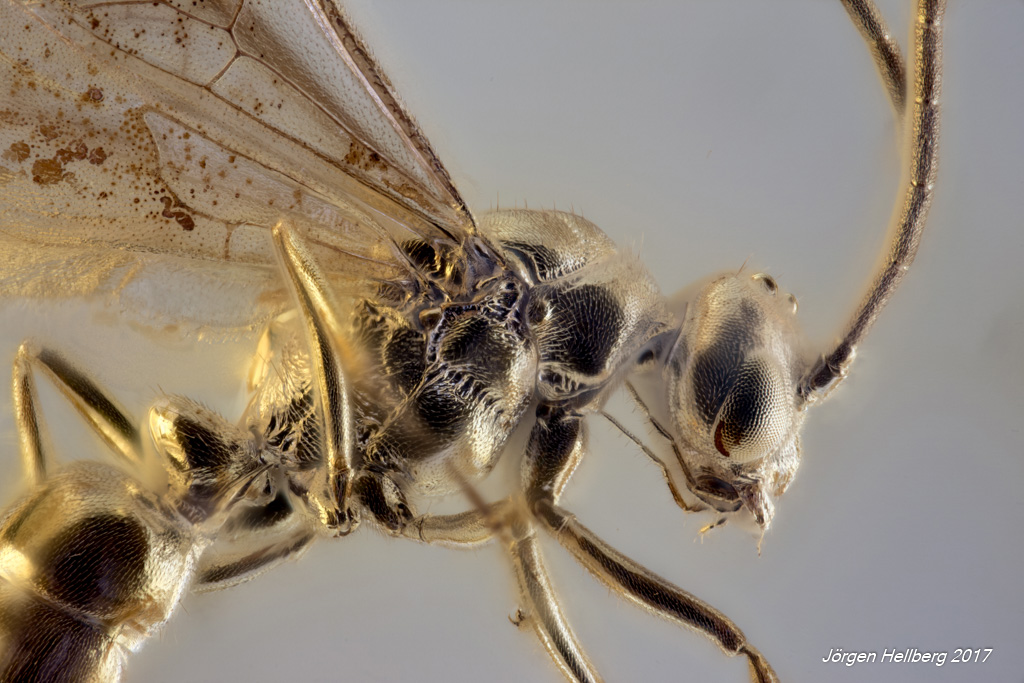
The photos were taken with a Nikon plan apo 4x objective. The microscope has a 2,5x projection lens so this is 10x on the camera sensor. This means that the horizontal is 3.6mm and the hight of the picture is 2.4mm.
I merged the 21 pictures in Agisoft photogrammetry program. The result is this 3D profile of the ant. Click on it to open it.
